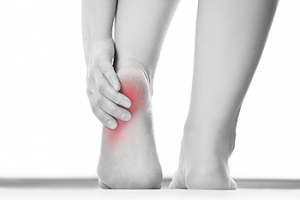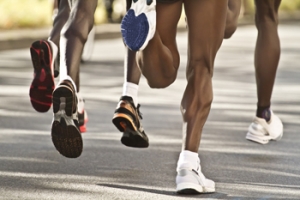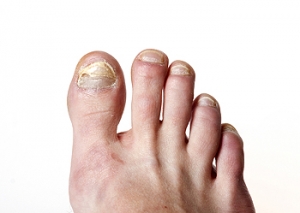Super User
Treatment and Prognosis of Sever's Disease
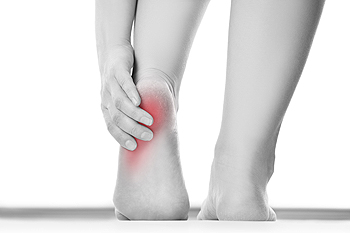 Sever’s disease, also known as calcaneal apophysitis, is a childhood foot injury in which the growth plate of the heel bone becomes inflamed due to repetitive overuse. It is one of the most common causes of heel pain in active children between the ages of 8 and 14. Treatment for Sever’s disease is almost always conservative. Resting the affected foot by limiting participation in sports or any other activities that place excess pressure on the heel bone is usually required for full recovery. Anti-inflammatory medications and ice packs can be used to reduce pain and swelling. In some cases, orthotic inserts may be needed to give the affected heel extra cushioning and support. Fortunately, the prognosis for Sever’s disease is very good. With proper treatment, this condition often goes away within several weeks. If your child complains of heel pain, it is suggested that you take them to see a podiatrist.
Sever’s disease, also known as calcaneal apophysitis, is a childhood foot injury in which the growth plate of the heel bone becomes inflamed due to repetitive overuse. It is one of the most common causes of heel pain in active children between the ages of 8 and 14. Treatment for Sever’s disease is almost always conservative. Resting the affected foot by limiting participation in sports or any other activities that place excess pressure on the heel bone is usually required for full recovery. Anti-inflammatory medications and ice packs can be used to reduce pain and swelling. In some cases, orthotic inserts may be needed to give the affected heel extra cushioning and support. Fortunately, the prognosis for Sever’s disease is very good. With proper treatment, this condition often goes away within several weeks. If your child complains of heel pain, it is suggested that you take them to see a podiatrist.
Sever's disease often occurs in children and teens. If your child is experiencing foot or ankle pain, see one of the chiropodists from The Footcare Centre. Our chiropodists can treat your child’s foot and ankle needs.
Sever’s Disease
Sever’s disease is also known as calcaneal apophysitis, which is a medical condition that causes heel pain I none or both feet. The disease is known to affect children between the ages of 8 and 14.
Sever’s disease occurs when part of the child’s heel known as the growth plate (calcaneal epiphysis) is attached to the Achilles tendon. This area can suffer injury when the muscles and tendons of the growing foot do not keep pace with bone growth. Therefore, the constant pain which one experiences at the back of the heel will make the child unable to put any weight on the heel. The child is then forced to walk on their toes.
Symptoms
Acute pain – Pain associated with Sever’s disease is usually felt in the heel when the child engages in physical activity such as walking, jumping and or running.
Highly active – Children who are very active are among the most susceptible in experiencing Sever’s disease, because of the stress and tension placed on their feet.
If you have any questions, please feel free to contact our office located in Niagara Falls, ON . We offer the newest diagnostic and treatment technologies for all your foot and ankle injuries.
Sever's Disease
Sever's disease, also known as calcaneal apophysitis, is a medical condition that causes heel pain in children’s feet while they’re growing. Sever's disease occurs most commonly in boys and girls between the ages of 8 and 14.
Sever's disease occurs when the child’s growth plate, or the calcaneal epiphysis, an area attached to the Achilles tendon, is injured or when the muscles and tendons of the growing foot do not keep pace with bone growth. The result is constant pain experienced at the back of the heel and the inability to put any weight on the heel. This forces the child to bear weight on their toes while walking. When a toe gait develops, the child must change the way they walk to avoid placing weight on the painful heel. If this is not properly addressed, this can lead to further developmental problems.
The most common symptom of Sever's disease is acute pain felt in the heel when a child engages in physical activity such as walking, jumping or running. Children who are active athletes are among the group most susceptible to experiencing Sever's disease. This is due to the extreme stress and tension placed on their growing feet. The rolling movement of the foot during walking or running and obesity are both additional conditions linked to causing Sever's disease.
The first step in treating Sever's disease is to rest the foot and leg and avoid physical activity. Over the counter pain-relieving and anti-inflammatory medications can be helpful for reducing the amount of heel pain. A child with Sever's disease should also wear shoes that properly support the heel and the arch of the foot. Consider purchasing orthotic shoe inserts which can help support the heel and foot while it is healing. Most patients with Sever's disease symptoms report an eventual elimination of heel pain after wearing orthotic insoles that support the affected heel.
Sever's disease may affect either one heel or both. It is important for a child experiencing heel pain to be examined by a foot doctor who can apply the squeeze test. The squeeze test compresses both sides of the heel in order to determine if there is intense pain. Discourage any child diagnosed with Sever's disease from going barefoot as this can intensify the problem. Apply ice packs to the affected painful heel two or three times a day for pain relief.
Exercises that help stretch the calf muscles and hamstrings are effective at treating Sever's disease. An exercise known as foot curling has also proven to be very effective at treating Sever's disease. When foot curling, the foot is pointed away from the body, then curled toward the body to help stretch the muscles. The curling exercise should be done in sets of 10 or 20 repetitions and repeated several times throughout the day.
Treatment methods can continue for at least 2 weeks and as long as 2 months before the heel pain completely disappears. A child can continue doing daily stretching exercises for the legs and feet to prevent Sever’s disease from returning.
Why Do Ingrown Toenails Develop?
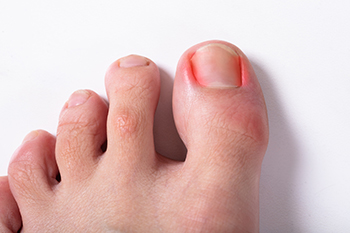 When a toenail grows into the skin surrounding it, an ingrown toenail forms. Ingrown toenails affect people of all ages. They can be painful and cause swelling and redness in the skin around the nail. Ingrown toenails may be caused by nails that are trimmed too short, wearing shoes that are too tight, or being born with an inherited curve to your nail. Symptoms typically progress from discomfort at the end or sides of the nail, to irritation of the surrounding skin, to steady or worsening pain, to possibly a callus developing, and— if the ingrown toenail is not treated properly—an infection. If you, your child, or your elderly loved one develop an ingrown toenail, it is suggested to seek treatment from a chiropodist to reduce the risk of an infection and to help the toenail grow normally again.
When a toenail grows into the skin surrounding it, an ingrown toenail forms. Ingrown toenails affect people of all ages. They can be painful and cause swelling and redness in the skin around the nail. Ingrown toenails may be caused by nails that are trimmed too short, wearing shoes that are too tight, or being born with an inherited curve to your nail. Symptoms typically progress from discomfort at the end or sides of the nail, to irritation of the surrounding skin, to steady or worsening pain, to possibly a callus developing, and— if the ingrown toenail is not treated properly—an infection. If you, your child, or your elderly loved one develop an ingrown toenail, it is suggested to seek treatment from a chiropodist to reduce the risk of an infection and to help the toenail grow normally again.
Ingrown toenails can become painful if they are not treated properly. For more information about ingrown toenails, contact one of our chiropodists of The Footcare Centre. Our chiropodists can provide the care you need to keep you pain-free and on your feet.
Ingrown Toenails
Ingrown toenails occur when a toenail grows sideways into the bed of the nail, causing pain, swelling, and possibly infection.
Causes
- Bacterial infections
- Improper nail cutting such as cutting it too short or not straight across
- Trauma to the toe, such as stubbing, which causes the nail to grow back irregularly
- Ill-fitting shoes that bunch the toes too close together
- Genetic predisposition
Prevention
Because ingrown toenails are not something found outside of shoe-wearing cultures, going barefoot as often as possible will decrease the likeliness of developing ingrown toenails. Wearing proper-fitting shoes and using proper cutting techniques will also help decrease your risk of developing ingrown toenails.
Treatment
Ingrown toenails are a very treatable foot condition. In minor cases, soaking the affected area in salt or antibacterial soaps will not only help with the ingrown nail itself but also help prevent any infections from occurring. In more severe cases, surgery is an option. In either case, speaking to your chiropodist about this condition will help you get a better understanding of specific treatment options that are right for you.
If you have any questions please feel free to contact our office located in Niagara Falls, ON. We offer the newest diagnostic and treatment technologies for all your foot and ankle needs.
Ingrown Toenails
An ingrown toenail is a nail that has curved downward and grown into the skin. This typically occurs at either the nail borders or the sides of the nail. As a result, pain, redness, swelling, and warmth may occur in the toe. If a break in the skin forms due to the ingrown nail, bacteria may enter and cause an infection in the area; this is typically characterized by a foul odor and drainage.
Ingrown toenails have multiple reasons for developing. In many instances, the condition is a result of genetics and is inherited. The most common cause, however, is improper trimming; cutting the toenails too short forces the skin beside the nail to fold over. An ingrown toenail can also develop due to trauma, such as stubbing the toe, having an object fall on the toe, or participating in activities that involve repeated kicking or running. Wearing shoes that are too tight or too short can also cause ingrown toenails.
Treatment for an ingrown toenail varies between patients and the severity of the condition. In most cases, it is best to see your chiropodist for thorough and proper treatment. After examining your toe, your chiropodist may prescribe oral antibiotics to clear the infection if one is present. Surgical removal of either a portion of the nail or the entire nail may also be considered. In some cases, complete removal or destruction of the nail root may be required. Most patients who undergo nail surgery experience minimal pain afterward and can return to normal activity the following day.
Ingrown toenails can be prevented with proper nail trimming and by avoiding improper-fitting shoes. When cutting the toenails, be sure that you are cutting in a straight line and avoid cutting them too short. Shoes should not be too short or tight in the toe box.
Make Small Changes to Prevent Big Falls
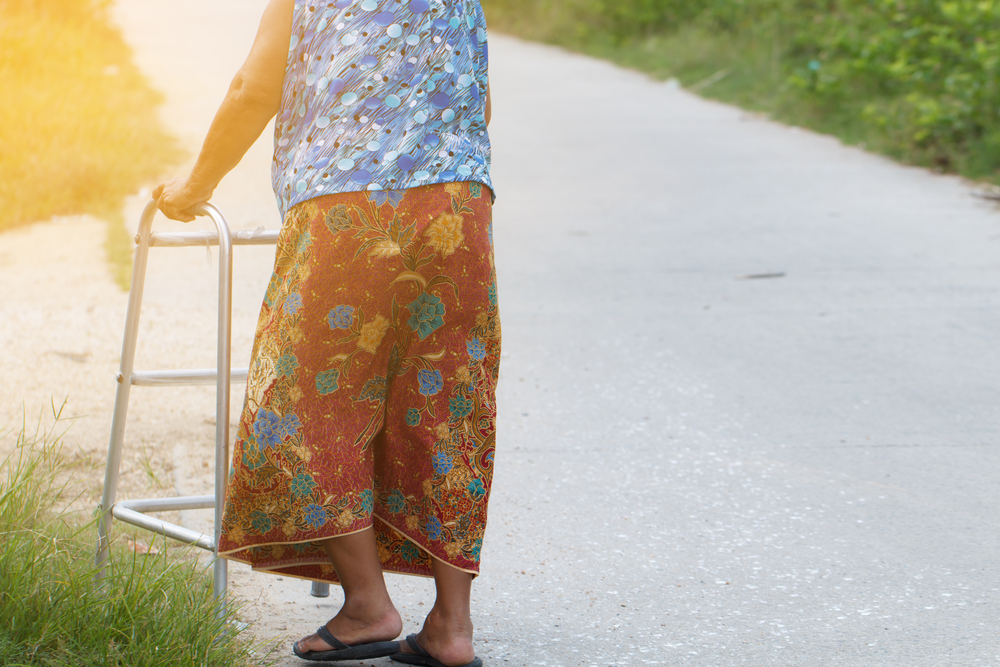 Falls are the leading cause of serious injuries among the elderly. Fortunately, falls can be prevented by making small meaningful modifications in the home environment and in your lifestyle. These modifications can include reducing clutter around the home, taking special care to make sure that the floor is clear of tripping hazards such as loose wires and cords, movable rugs, and any other obstacles. Make sure that your home is well lit so that you can always see where you’re walking. In the bathrooms, use non-slip mats around the tub or shower. If you have stairs in your home, make sure that you have secure handrails to help go up and down safely. Eating healthy meals, engaging in regular physical activity, wearing comfortable shoes, and using walking aids as needed can all help keep you on your feet. For more tips on how to prevent falls, consult with a chiropodist.
Falls are the leading cause of serious injuries among the elderly. Fortunately, falls can be prevented by making small meaningful modifications in the home environment and in your lifestyle. These modifications can include reducing clutter around the home, taking special care to make sure that the floor is clear of tripping hazards such as loose wires and cords, movable rugs, and any other obstacles. Make sure that your home is well lit so that you can always see where you’re walking. In the bathrooms, use non-slip mats around the tub or shower. If you have stairs in your home, make sure that you have secure handrails to help go up and down safely. Eating healthy meals, engaging in regular physical activity, wearing comfortable shoes, and using walking aids as needed can all help keep you on your feet. For more tips on how to prevent falls, consult with a chiropodist.
Falls are a major cause of injury among the elderly. To learn more about preventing falls or to get treatment following a foot or ankle injury caused by a fall, please consult with one of our chiropodists of The Footcare Centre. Our chiropodists will assess your condition and provide you with quality foot and ankle treatment.
Falling is one of the leading causes of injury among older Canadians. It is said that about 50% of falls that result in hospitalization, occur in the home. Fortunately, there are steps that you can implement to reduce your risk of falling in the home.
Tips to Prevent Falls at Home:
- In the bathroom - place non-slip mats in the shower or tub, install grab bars near the toilet and bath, and wipe up any moisture or spills as soon as possible.
- In the living rooms and bedroom - remove loose wires, cords, or other objects that may be an obstacle to moving around safely. Make sure that you have good lighting throughout the home so that you can always see where you are going. Get rid of any rugs or mats that are not firmly anchored or that may cause you to trip. When walking around the home, move slowly.
- In the kitchen - store food and supplies in easily accessible areas, store heavy items in lower cupboards, and wipe up any spills immediately to prevent slipping.
- On the stairs - make sure that the stairs are well-lit and have secure handrails. Walk slowly when ascending or descending the stairs.
- Outside - keep walkways well-lit and clear of snow, ice, leaves, and man-made tripping hazards.
Maintaining your overall health, including the health of your feet, can also help to prevent falls. Eat a healthy diet, exercise regularly, and wear well-fitted, comfortable and supportive shoes. If you have a mobility device, such as a cane, use it while walking.
If you have any questions please feel free to contact our office located in Niagara Falls, ON . We offer the newest diagnostic and treatment technologies for all your foot and ankle needs.
Falls Prevention
Elderly Americans are very susceptible to falls as they get older. Everyone experiences decreases in flexibility, balance, strength, and the senses as they age. This correlates to some eye-opening statistics. 1 in 4 Americans aged 65 and older fall each year. An elderly American is being treated for a fall in an emergency room every 11 seconds, and every 19 minutes, an older person dies from falling. In light of these striking statistics, one can see the importance of taking steps to prevent falls.
Finding an exercise program for the elderly is an excellent way to reduce the likelihood of falls. Look for an exercise program that improves strength and balance. Elderly people who live a more sedentary lifestyle, with little physical activity, are at an increased risk of falling. Wearing well-fitted footwear that provides good foot support and cushion will help prevent falls from poorly fitted shoes. Talking to a chiropodist about your susceptibility to falls and about inspecting your prescriptions will help to avoid any medication that could make falls more likely. Due to a decline in the senses among the elderly, having your eyes and hearing checked is recommended.
Around half of all falls occur in the household. Removing tripping hazards in the home and making it more accommodating to older persons can significantly reduce falls. Some notable household changes include increasing lighting around the house, installing grab bars in the shower and bathroom, and making sure the floor is clear of clutter. Other smart options include installing a shower chair, using rubber-bottomed rugs, and placing railings on both sides of stairwells.
Finally, discuss with a chiropodist and your family about your fear of falling. This will help to increase awareness among the population on the need for fall prevention. A lack of awareness on the matter, and a downplaying of importance are what increase the risks of falling. Following these tips can help to reduce the risk for yourself and your loved ones.
Things You Should Do to Prevent Running Injuries
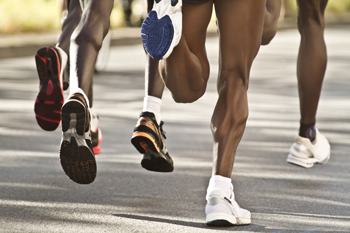 Whether you run for fun or are training for a marathon, you should always take measures to avoid common running injuries such as plantar fasciitis and Achilles tendinitis. Make sure that after you run, you take time to allow your body to rest and recover. Taking a day off from running to rest may help you avoid overuse injuries. Using foam rollers, massaging your muscles, and gently stretching your legs and feet after a run is suggested. Sleeping well and eating a healthy diet, wearing the right shoes, and increasing your training gradually over time are also beneficial. To learn more about how to prevent running injuries, please consult with a podiatrist.
Whether you run for fun or are training for a marathon, you should always take measures to avoid common running injuries such as plantar fasciitis and Achilles tendinitis. Make sure that after you run, you take time to allow your body to rest and recover. Taking a day off from running to rest may help you avoid overuse injuries. Using foam rollers, massaging your muscles, and gently stretching your legs and feet after a run is suggested. Sleeping well and eating a healthy diet, wearing the right shoes, and increasing your training gradually over time are also beneficial. To learn more about how to prevent running injuries, please consult with a podiatrist.
Exercising your feet regularly with the proper foot wear is a great way to prevent injuries. If you have any concerns about your feet, contact one of the chiropodists of The Footcare Centre. Our chiropodists will treat your foot and ankle needs.
How to Prevent Running Injuries
Many common running injuries are caused by overuse and overtraining. When the back of the kneecap starts wearing out and starts causing pain in your knee, this is commonly referred to as runner’s knee. Runner’s knee is a decrease in strength in your quadriceps and can occur if you’re not wearing properly fitted or supporting shoes. To prevent runner’s knee, focusing on hip strengthening is a good idea, as well as strengthening your quads to keep the kneecaps aligned.
What Are Some Causes of Running Injuries?
- One cause of a common running injury is called iliotibial band syndrome.
- Plantar fasciitis is also another common injury.
- Stress fractures can occur from overtraining, lack of calcium, or even your running style.
Best Ways to Prevent Running Injuries
- Wear footwear that fits properly and suits your running needs.
- Running shoes are the only protective gear that runners have to safeguard them from injury.
- Make a training schedule. Adding strengthening exercises as well as regular stretching can help keep you strong and limber and can lessen the possibility of injuries.
- Stretching keeps muscles limber; this will help you gain better flexibility.
If you have any questions please feel free to contact our office located in Niagara Falls, ON . We offer the newest diagnostic and treatment technologies for all your foot and ankle needs.
How to Prevent Running Injuries
Overtraining and overusing the feet are the main causes of common running injuries. A number of these common injuries are caused by overrunning. Runner’s knee is a condition that is characterized by the back of the kneecap beginning to wear away and cause pain in the knee. This frequently occurs due to either a decrease in strength in the quadriceps muscles or ill-fitting shoes that are lacking in proper support for the inside of the forefoot. Strengthening exercises focusing on the quad muscle and sports orthotics are the usual treatments for those suffering from runner’s knee. Prevention of the condition lies in a focus on hip strengthening and quad-strengthening to keep the kneecap aligned. To help learn the best exercise to heal runner’s knee, one can also undergo physical therapy.
One common injury, called iliotibial band syndrome, is often caused by overtraining. This condition occurs when the iliotibial band gets irritated, creating pain and discomfort in the outside knee area. Plantar fasciitis, another common running injury, also occurs as a result of inflammation and irritation. Plantar fasciitis is an inflammation and irritation of the bone in the foot. A large amount of pain is often experienced due to plantar fasciitis. The condition can be caused by a high arch, improper footwear, tight muscles, or flat feet. It can best be avoided by stretching and wearing appropriate footwear that supports the foot.
Another common injury for runners is stress fractures. These injuries occur due to running style, overtraining, or a lack of calcium. Stress fractures most often occur in several locations in runners, including the inner bone of the leg, the thighbone, the bone at the base of the spine and the bones of the toes. Stress fractures are best prevented by wearing proper footwear and by running on flat and hard surfaces; this will absorb some of the shock created during running.
Aside from overtraining, other causes of common running injuries include ill-fitting footwear, a lack of flexibility and strength, and irregular biomechanics. The best way to avoid running injuries is to prevent them from even occurring. Both iliotibial band syndrome and stress fractures are preventable. The first step that should be taken to prevent running injuries is to only wear footwear that fits properly and that is appropriate for whatever activity you are doing. Running shoes are the only protective gear available to runners that can safeguard them from sustaining injuries. Choosing the right pair of shoes is therefore extremely important. While running shoes are an important factor, it is also important to consider other facets of your running routine such as training schedules, flexibility, and strengthening. These elements should be considered and altered according to your running needs to best maximize your run and minimize the possibility of injury. Careful stretching before and after a run should also be considered to help prevent running injuries. Stretching muscles enables greater flexibility and a lesser chance of sustaining injury.
Lowering Your Chances of Toenail Fungus
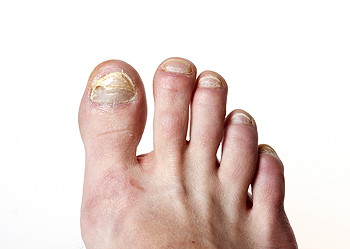 Toenail fungus, or onychomycosis, is a fungal infection of the nail. This type of infection can be unsightly and uncomfortable, causing thickened, brittle, crumbly, and discolored toenails. Over time, the nails may begin to separate from the nail bed, leading to pain or discomfort while wearing shoes. Fungal nail infections can be highly contagious, so it is important to take measures to prevent infection. Maintain good foot hygiene by washing your feet daily and drying them thoroughly. Wear socks and shoes made with breathable, moisture-wicking materials. When using public facilities like swimming pools and locker rooms, where fungi tend to thrive, wear shoes to prevent exposure. You should also avoid sharing personal items, like towels or nail clippers, with other people. To learn more about preventing fungal nail infections, please consult with a podiatrist.
Toenail fungus, or onychomycosis, is a fungal infection of the nail. This type of infection can be unsightly and uncomfortable, causing thickened, brittle, crumbly, and discolored toenails. Over time, the nails may begin to separate from the nail bed, leading to pain or discomfort while wearing shoes. Fungal nail infections can be highly contagious, so it is important to take measures to prevent infection. Maintain good foot hygiene by washing your feet daily and drying them thoroughly. Wear socks and shoes made with breathable, moisture-wicking materials. When using public facilities like swimming pools and locker rooms, where fungi tend to thrive, wear shoes to prevent exposure. You should also avoid sharing personal items, like towels or nail clippers, with other people. To learn more about preventing fungal nail infections, please consult with a podiatrist.
For more information about treatment, contact one of the chiropodists of The Footcare Centre. Our chiropodists can provide the care you need to keep you pain-free and on your feet.
Toenail Fungus Treatment
Toenail fungus is a condition that affects many people and can be especially hard to get rid of. Fortunately, there are several methods to go about treating and avoiding it.
Antifungals & Deterrence
Oral antifungal medicine has been shown to be effective in many cases. It is important to consult with a podiatrist to determine the proper regiment for you, or potentially explore other options.
Applying foot powder on the feet and shoes helps keep the feet free of moisture and sweat.
Sandals or open toed shoes – Wearing these will allow air movement and help keep feet dry. They also expose your feet to light, which fungus cannot tolerate. Socks with moisture wicking material also help as well.
If you have any questions please feel free to contact our office located in Niagara Falls, ON . We offer the newest diagnostic tools and technology to treat your foot and ankle needs.
Toenail Fungus
Toenail fungus is a frustrating problem that affects many people. It can be persistent and hard to get rid of. As many different types of fungi are present throughout the environment, it is very easy to contract toenail fungus.
The feet are especially susceptible to toenail fungus because shoes and socks create the ideal dark and moist environment that fungal infections thrive in. While fungal infections of the nail plate are quite common, if left untreated they can spread beyond the toenail and into the skin and other parts of the body.
Signs of toenail fungus include a thickened nail that has become yellow or brown in color, a foul smell, and debris beneath the nail. The toe may become painful due to the pressure of a thicker nail or the buildup of debris.
Treatment for toenail fungus is most effective during the early stages of an infection. If there is an accumulation of debris beneath the nail plate, an ingrown nail or a more serious infection can occur. While each treatment varies between patients, your podiatrist may prescribe you oral medications, topical liquids and creams, or laser therapy. To determine the best treatment process for you, be sure to visit your podiatrist at the first signs of toenail fungus.
